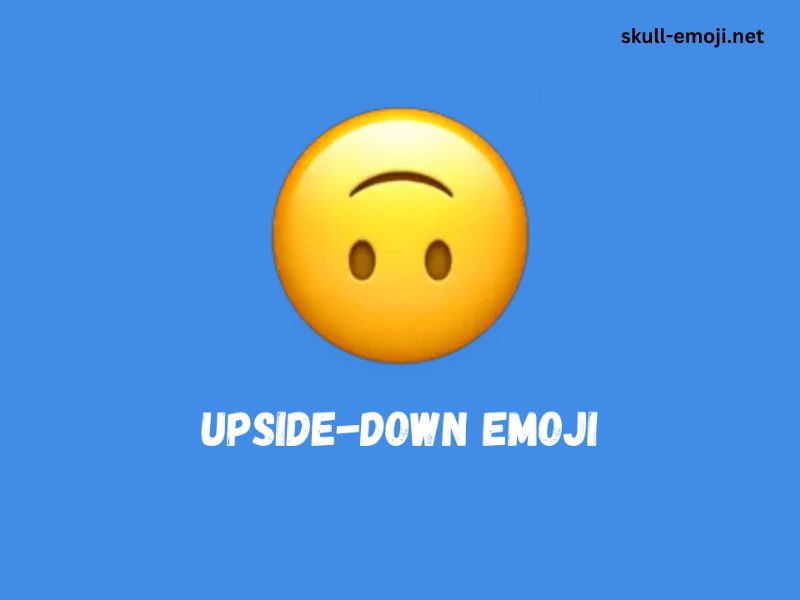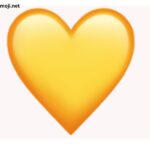In today’s digital world, emojis have become an essential part of online communication. These small pictorial symbols help convey emotions, tone, and context in messages, making them an integral part of text-based conversations. One emoji that often leaves people confused is the upside down smiley face: 🙃. This simple symbol, while seemingly playful and innocent, can have various meanings depending on the context in which it’s used. If you’ve ever wondered, “What does an upside down smiley face mean?” you’re not alone. In this article, we will delve deep into the various interpretations, uses, and cultural significance of the upside down smiley face emoji.
The Basics: What is the Upside Down Smiley Face Emoji?
The upside down smiley face emoji is typically represented as 🙃 and is often referred to as the “upside down face” emoji. It was officially added to the Unicode Standard in 2014, and since then, it has gained popularity in social media, texting, and casual online interactions. While the emoji may appear to be nothing more than a whimsical or silly symbol at first glance, it actually carries a range of meanings that go beyond a simple smile.
Common Meanings of the Upside Down Smiley Face Emoji
1. Sarcasm or Irony
One of the most common uses of the upside down smiley face emoji is to convey sarcasm or irony. When used in a sentence or message, it indicates that the sender is not being entirely serious or is making a playful, mocking statement. The emoji adds a layer of meaning that signals the statement should not be taken literally.
For example:
- “Great, another Monday… 🙃” In this context, the sender might be sarcastically expressing their frustration about the start of the workweek.
2. Playfulness or Mischief
The upside down smiley face emoji often represents a playful or mischievous tone. It is commonly used in lighthearted, joking contexts where the sender is teasing, being a little cheeky, or making a fun comment. The upside down face has an informal vibe that suggests a carefree, relaxed, or even “naughty” attitude.
Example:
- “I’m sorry, I ate the last slice of pizza 🙃” This playful use signals that the person is joking around and not to be taken too seriously.
3. Confusion or Disorientation
Another interpretation of the upside down smiley face emoji is to express confusion, disorientation, or the feeling of being overwhelmed. When faced with a situation that doesn’t make sense, people might use the upside down face to symbolize a moment where they are unsure of what’s going on or how to respond.
For example:
- “I just read 10 pages, and now I feel like I understand nothing 🙃” Here, the emoji helps to communicate a sense of confusion or bewilderment.
4. Self-Deprecation
In some cases, the upside down smiley face emoji is used to represent self-deprecation or a light-hearted acknowledgment of one’s own mistakes or awkward moments. It’s a way to downplay a situation with humor, signaling that the user is not taking themselves too seriously.
Example:
- “I just spilled coffee on my shirt. Classic me 🙃” This shows a person poking fun at themselves for a silly mistake or accident.
5. Ambivalence or Mixed Feelings
Sometimes, the upside down smiley face emoji can represent mixed or ambivalent emotions, particularly when someone feels torn between two opposing feelings or unsure about a situation. The emoji can express a “what’s going on here?” or “I’m not sure how to feel” sentiment.
Example:
- “I got a promotion, but now I have more work… 🙃” Here, the emoji reflects the user’s mixed emotions about their achievement. While the promotion is exciting, there’s a bit of overwhelm associated with the new responsibility.
6. Irony or Sarcastic Happiness
In some cases, the upside down smiley face emoji is used to express ironic or sarcastic happiness. For example, when someone is pretending to be happy but is actually not, they may use this emoji to show that their happiness is not entirely genuine.
Example:
- “Yay, I get to work all weekend 🙃” In this case, the person might not actually be excited, but the emoji adds a humorous, sarcastic spin to the message.
7. Feeling Overwhelmed
The upside down smiley face emoji can also be used to convey a feeling of being overwhelmed or unable to cope. When life gets too much to handle, some people use the upside-down face as a way of expressing their frustration with the situation.
Example:
- “I have three exams tomorrow and I still haven’t studied 🙃” Here, the emoji implies a sense of stress, frustration, or even a resigned “what else can go wrong?” attitude.
The Cultural Significance of the Upside Down Smiley Face Emoji
While the upside down smiley face emoji may seem like a simple symbol, it has taken on significant cultural importance in various online communities. Emojis like the upside-down smiley face help people communicate more nuanced emotions in a way that text alone sometimes can’t. They provide a visual shorthand for complex feelings, making communication feel more personal and emotionally resonant.
Additionally, the upside down smiley face emoji has found a place in meme culture, where it’s often used to enhance jokes or illustrate ironic situations. The emoji can also be used to subtly reference “being stuck in a loop,” a feeling often associated with social media consumption, work-life imbalance, or existential confusion.
How to Use the Upside Down Smiley Face Emoji Effectively
If you’re wondering how to use the upside down smiley face emoji in your own conversations, here are some tips to ensure you’re using it effectively:
- Match the tone: The upside down smiley face emoji works best when your message has a playful or sarcastic tone. It can also work well in light-hearted situations where you’re joking or making fun of yourself.
- Consider context: If you’re talking about something confusing or ironic, the upside down smiley face can help convey your feelings more clearly.
- Don’t overuse it: Emojis are powerful tools for expressing emotion, but overuse can diminish their effectiveness. Use the upside down smiley face emoji when it truly fits the context, not just for the sake of adding it.
Other Emojis with Similar Meanings
While the upside down smiley face emoji is unique, there are other emojis that can convey similar meanings. For example:
- The classic smiley face emoji 🙂 – This emoji conveys happiness and contentment but is more straightforward and genuine compared to the upside down version.
- The winking face emoji 😉 – Often used to convey humor, flirtation, or playfulness, this emoji has a similar light-hearted vibe as the upside down smiley face.
- The face with rolling eyes emoji 🙄 – This emoji can be used to express frustration or annoyance in a similar way to the upside down smiley face, especially in situations where sarcasm is implied.
Conclusion
The upside down smiley face emoji is a versatile and dynamic tool in online communication. From conveying sarcasm and irony to signaling confusion or mixed feelings, it has evolved into a symbol of humor, self-deprecation, and playful irreverence. While it can be used in many ways, it’s important to understand the context and tone of your message to make sure you’re communicating your true feelings



